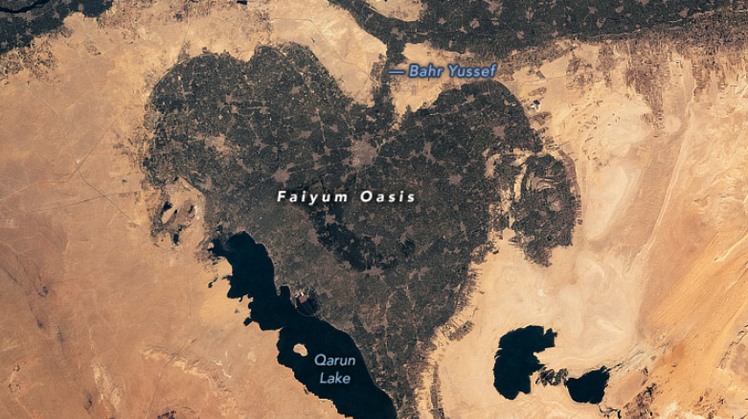250 miles (400 kilometers) above Earth, astronauts aboard the International Space Station (ISS) looked at our planet last May and saw a heart-shaped oasis bloom in the Egyptian desert. Today, astronauts shared the stunning image as a special Valentine's Day for the entire planet, with permission. From the NASA Earth Observatory website.
Known as the Faiyum Oasis, this lush heart of the desert is actually a vast basin of wetlands spanning over 450 square miles (1,200 square kilometers) — about one and a half times the size of the five boroughs of New York City. The oasis has sustained human life for nearly It is 8,000 years old, according to NASA, and was the starting point for some of the most ambitious engineering feats in ancient history, as Live Science reported.
The oasis is fed by a natural channel of the nearby Nile River known as Bahr Yusuf. The oasis was once a shimmering lake called Lake Moeris as the lake's existence depended on seasonal flooding from the Nile. Sometimes daring measures, and there is evidence that a series of pharaohs who lived about 4,000 years ago specifically addressed the water shortage by expanding Bahr Yusef to manually return water to the area.
According to the College of London's website, "this was one of the oldest national mega-projects in the world" with "Kings of the Twelfth Dynasty" Amenemhat I and III earning the title of "Kings of Engineering".
Today, the much smaller ancient lake known as Lake Qarun lives on thanks to those ancient engineering feats and the rest of the sprawling lakes remain a lush oasis supporting the many villages, towns, farms and orchards - which you (and astronauts) can see in the gray, gray areas Completed heart oasis.
 Tue, Feb. 15, 2022
Tue, Feb. 15, 2022